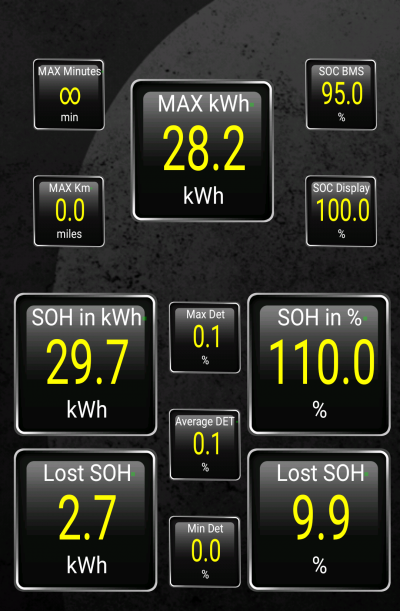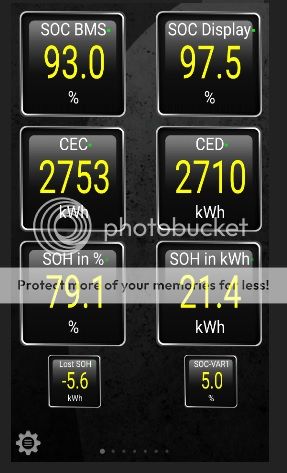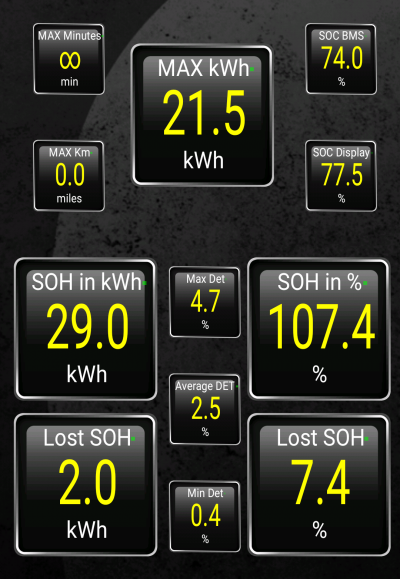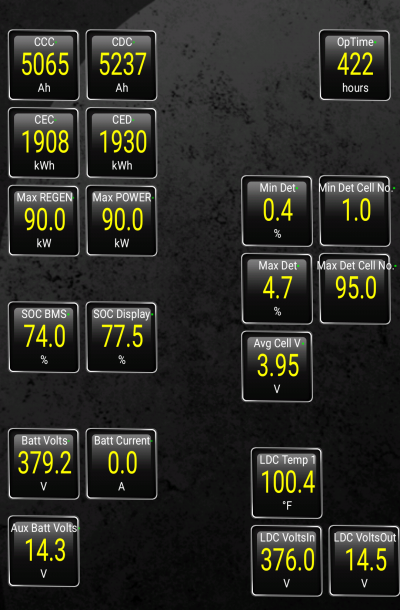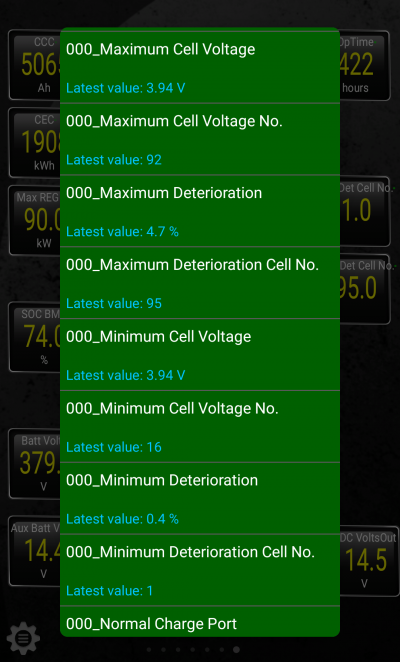I can see how it can be confusing. The SOH values are something that we compute locally based on the PIDs the car provides-- it doesn't mean its 100% accurate. As JejuSoul mentions in the BMS thread:
Furthermore:
So in my case, SOH is really 100% (at 110% shown), SOH in kWh is really 27 kWh (at 29.7 kWh shown), and the Lost SOH is really 0% (at 10% shown). Remember that with my old (original) battery pack, Torque was showing anywhere between 79.4% to 91.7% SOH, even though the actual value measured by the dealership was 66.5% SOH.
Now these values have changed in Torque (after the DCFC experiment), I'm guessing that the actual values have also changed to "something" below 100% SOH. Think of these as "relative" measurements.
The diagnostic data provided by the BMS does not include the SOH. It only has the min and max deterioration data from the total capacity.
After nearly 3 years of monitoring this data we were able to conclude that the SOH number as checked by a Kia service tech is actually a computed value. It is the average of min and max, taken away from 110. At Kia service any number greater than 100 is shown as 100%.
Furthermore:
For the next two years you will have to ignore these 'false' positives.
In the graphic above SOH is really 100%, SOH in kWh is really 27kWh and Lost SOH is really zero.
So in my case, SOH is really 100% (at 110% shown), SOH in kWh is really 27 kWh (at 29.7 kWh shown), and the Lost SOH is really 0% (at 10% shown). Remember that with my old (original) battery pack, Torque was showing anywhere between 79.4% to 91.7% SOH, even though the actual value measured by the dealership was 66.5% SOH.
Now these values have changed in Torque (after the DCFC experiment), I'm guessing that the actual values have also changed to "something" below 100% SOH. Think of these as "relative" measurements.




